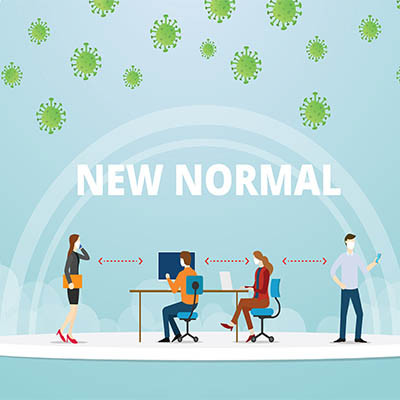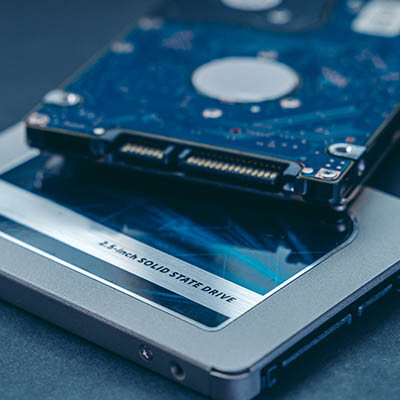Authentication has been a major talking point for the past few years, particularly as the value of data has only increased and security has correspondingly increased in importance. As a result, more secure and reliable means of identity verification have also become more critical. Now, voice authentication is being considered as such a means.
Argentum IT LLC Blog
Sometimes technology just doesn’t do what we need it to, an annoyance that leads most users to call the help desk for assistance. While this is certainly well and good, we thought we would share a couple of tips that you can use to save some time for both yourself and your help desk, hopefully leading to a faster and more efficient way of troubleshooting problems.
Successful businesses and influencers use social media to great effect, no matter the service, but as with most accounts in a connected world, security is extremely important and can influence your own use of social media. Let’s discuss some ways that you can keep yourself safe while using social media and how smart use of social media can improve the security of your business, too.
With businesses relying so much on technology to accomplish just about everything, IT undoubtedly has an important role to play. It makes sense that you would want your business’ IT to deliver as much value as possible. To accomplish this, we wanted to go over three IT-centric processes that are primed to help you do so.
The Internet might be a great resource for modern businesses, but it can also waste a lot of time and expose your company to more risks than you’d think. As a business owner, it is your responsibility to take action against these threats and do what must be done to protect your company from them. One of the best ways you can do this is by implementing a content filter for your network traffic.
You might think that remote work for specific positions is taking off, and while this is true for some, it’s not necessarily the case for all. Knowledge workers, for example, are seeing fewer and fewer new job postings, as evidenced by a report from Braintrust. This report analyzed 150,000 new job postings and had some surprising results on the remote work front.
Whether you refer to them as clients or customers, the people who act as patrons to your business are essential to its success and survival. This means that you need to keep them as happy as possible. While there are many aspects of maintaining a high level of customer service, we wanted to take a bit of time to examine how deploying the right technology can assist your business in doing just that.
The process of implementing new technology for your business can be a tiresome, frustrating, and confusing process. This is especially the case when you implement a new technology solution only to find that it was absolutely not worth the effort. Let’s take a look at some of the reasons why your IT project deployment might not go according to plan, as well as how you can make sure this does not happen for your company.
Your business’ technology is the best tool for its success… or it can be, at least. In order for you to see the kind of value from your tech that you’d expect of it, you need to approach it by making good decisions. We wanted to go over a few ways not to do so, to help you avoid undesirable situations.
With productivity being a massively important metric for every business, situations like the ongoing COVID-19 pandemic create a lot of fear and uncertainty; especially with businesses having to find new ways to go about doing things so that they can keep revenue coming in. This week, we thought we’d take a minute to look into how businesses have made it this far and how each element of a business has had to react to the ongoing crisis.
We live in an era of upgrades. For example, how often do you upgrade your smartphone? Do you give the same care and attention to your business’ technology? Oftentimes users ignore the signs that it is time for an upgrade even when they are crystal clear, just saying to themselves, “I’ll get by just fine.”’ This is not the correct mentality. You need to be able to identify when older devices are holding you back and take steps toward replacing them with better, more powerful ones.
It is a well-known and unfortunate fact that technology does not last forever, and in today’s era of upgrades, no time has this been more true than in the modern day. Therefore, it makes sense for businesses to have a plan in place for when it does come time to replace older devices. This, of course, involves the proper disposal of connected devices, a practice that could very easily be done in a way that is both destructive to the environment and devastating for data privacy if done improperly. We’re here to make sure this doesn’t happen.
When you’re on the hunt for some new technology, you have to sort through the options available to you to find what’s best for your use case. One of these decisions is what type of hard drives are installed in new workstations, laptops, and servers. Today, we will go through the two main types of hard drives and what they are good for.
The office environment has changed a lot over the years with technology being the impetus for such change. In your years doing business, how much has changed? How much of that change was driven by technology? Many of the traditional conventions of conducting business have been changed for the better as a result of these technological developments; here are just a few of them.
If you are one of the many small businesses out there that does not have reliable technical support for the myriad of devices on your network, it might be difficult to imagine a world where your technology gets the maintenance it needs to thrive. Thankfully, you’re not alone. Here are some basic technology maintenance tips that anyone can implement, plus one at the end that we think small businesses, in particular, will benefit from!
Regardless of their size, businesses need access to some considerable amounts of data nowadays. This means that even small businesses have situations to consider that not only carries data considerations, but operational considerations. Considering many businesses have shifted to a remote workforce (or some variant of it), it stands to reason that an organization’s hardware investments have to be more strategic than ever before.
The COVID-19 pandemic forced the way people worked drastically, and it did it very suddenly. As more people are being vaccinated, offices are starting to reopen. Workers, who gained substantial flexibility by working from home, however, are now expecting some of that flexibility to continue. Employers, who up until mandated shutdowns were not enthusiastic that they could make the remote workforce work for their companies are now set up to manage them proficiently. This month we thought we would take a look at the inevitable compromise that is being reached: the hybrid workplace.
Efficiency is king in the business world. In order to reach optimal productivity, organizations are always aiming to prevent operational issues, eliminate unnecessary costs, and cut down on anything that keeps them from reaching their goals. Technology is a major tool in this effort, offering solutions that can enhance productivity, automate processes, facilitate collaboration, and maintain critical systems. All of this and more can be done by working with a great IT services provider.




















